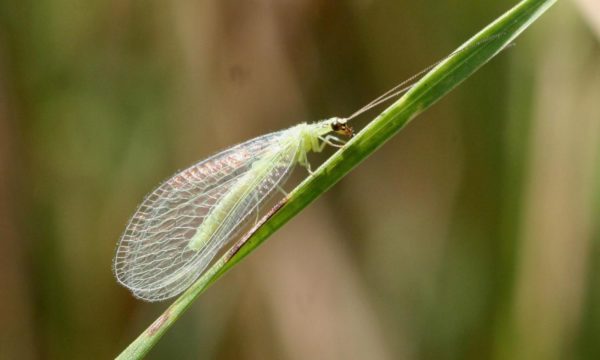CALL TO MEET WITH AN ARBORIST
704.525.3066 Charlotte
828.231.6008 Asheville
704.892.8927 Lake Norman
Beneficial Insects in
Your Landscape
Most of the insects, spiders, and other mini-creatures that live in your landscape are harmless – and often beneficial – to you or your plants. Only a handful of species are harmful to your plants; unfortunately, these give the other critters a bad name. An ecologically-healthy garden or landscape has a diverse fauna of insects, spiders, mites, centipedes, and harvestmen, each with a unique, and usually beneficial, role in keeping your backyard habitat healthy and functioning efficiently. Beneficial arthropods (insects, mites, spiders, centipedes, and harvestmen) that help maintain a garden are classed as either predators or parasitoids.
Predators
Predatory insects and spiders hunt, attack, kill, and consume insect and mite prey, usually smaller than themselves. They are the equivalent of big cats in the jungle, and range in size from microscopic predatory mites to praying mantids that are 3 to 4 inches long.
Ladybugs, or lady beetles, are considered a beneficial bug which helps rid an area of crop-damaging aphids, mealybugs and other destructive insect pests. Both the larval and adult ladybugs feed on these insects. They also lay their eggs among the aphids or other prey so the emerging larvae can feed on the insects.
Praying Mantids are among the largest and most recognizable garden predators – and they’re not fussy about what they catch and eat. They are “sit and wait” predators that pounce on any insect that comes too close.
Green lacewings are delicate, slender-bodied, inch long creatures that appear to fly weakly, with lacy, netted wings. Green lacewings lay their eggs singly, each on a long, hair-like stalk, presumably to keep the egg away from substrate-based predators. Although adults of some lacewings are predatory, it is the lacewing larvae that provide most of the pest control in the garden. Lacewing larvae, like lady beetle larvae, resemble little alligators, but differ by having enlarged sickle-shaped mouthparts that extend forward from the head. These mouthparts puncture prey and consume their fluids. The larvae are sometimes called trash or lichen bugs for their tendency to cover their bodies with bits of material as they crawl along. In our area this often includes wooly aphid exoskeletons, and gloomy scale covers.
Predatory mites are among the unseen, and invariably, the unsung heroes of the home landscape. They prey mainly on plant-feeding pest mites, but also consume insect eggs and thrips. Because of their tiny size, a hand-lens or microscope is usually needed to have a good look at these creatures. Most mites move rapidly and may be seen by the naked eye as fast moving “dots” on the undersides of leaves.
Parasites

A parasite is an organism that lives and feeds in or on a host. Insect parasites can develop on the inside or outside of the host’s body. Often only the immature stage of the parasite feeds on the host. However, adult females of certain parasites (such as many wasps that attack scales and whiteflies) feed on and kill their hosts, providing an easily overlooked but important source of biological control in addition to the host mortality caused by parasitism. Although the term “parasite” is used here, true parasites (e.g., fleas and ticks) do not typically kill their hosts. Species useful in biological control, and discussed here, kill their hosts; they are more precisely called “parasitoids.” Most parasitic insects are either flies (Order Diptera) or wasps (Order Hymenoptera). It’s important to note that these tiny to medium-sized wasps are incapable of stinging people.
Hairy Tachinidae are the most common parasitic fly and resemble common house flies. Eggs are laid on their hosts or on the plants that their hosts are living on. Young larvae then feed on the caterpillar hosts.
Parasitic Wasps come in many varieties and can help control many different pests in the landscape. Depending upon the species they can use scale insects, mealybugs, caterpillars, moths, and beetles.
GET LIVE UPDATES FROM HEARTWOOD TREE
Stay current with the updates, newsletter and our event schedule. We are passionate about increasing awareness about the diminishing canopy coverage of our planet and we’re always staying involved to continue to be a part of the solution.


